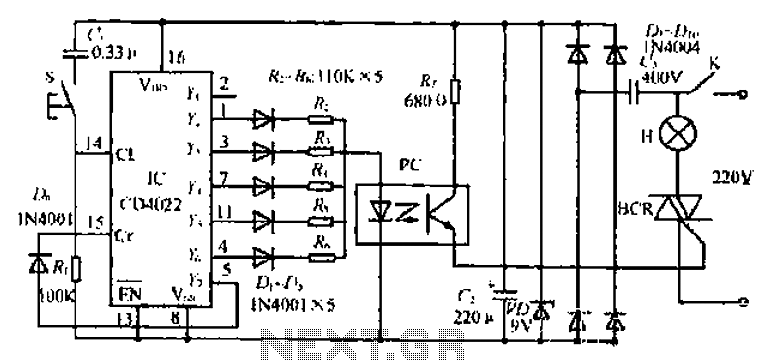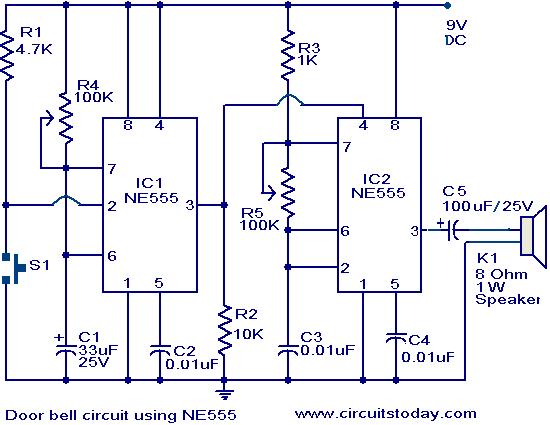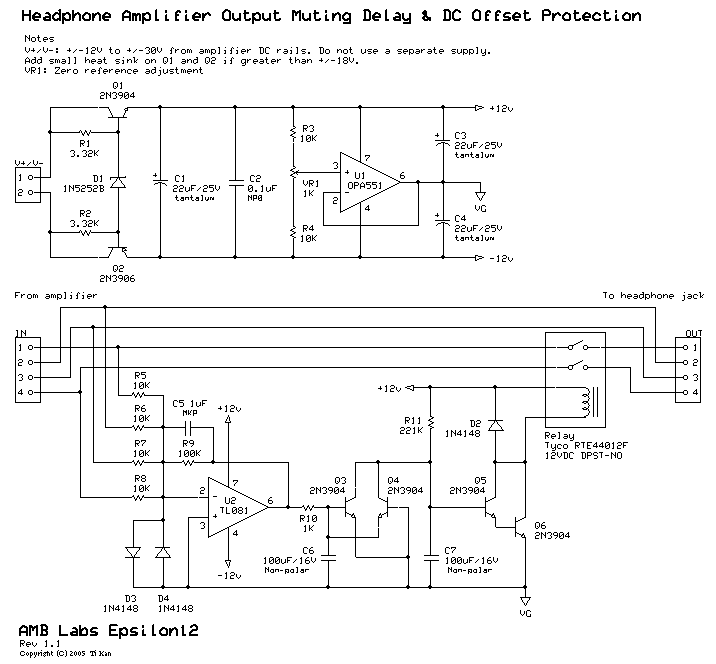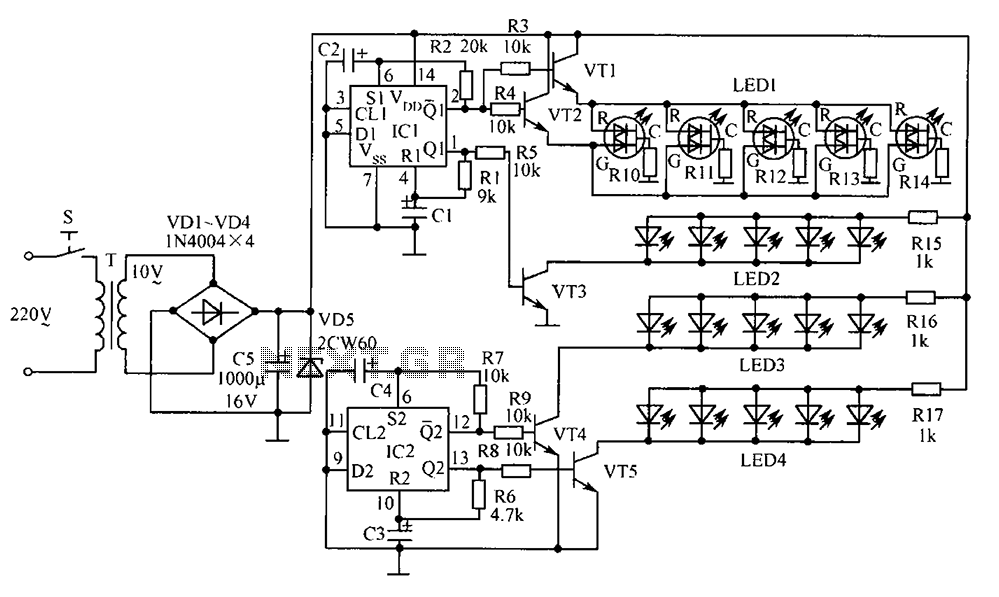
Diode Digital Thermometer Circuit
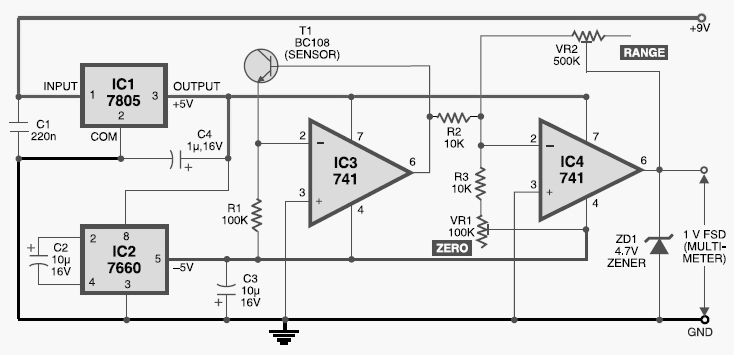
This digital thermometer circuit diagram uses a common 1N4148 diode as the temperature sensor. The temperature coefficient of the diode is -2 mV/°C.
The digital thermometer circuit leverages the characteristics of the 1N4148 diode, which has a well-defined temperature coefficient. As the temperature changes, the forward voltage drop across the diode varies, allowing it to serve as an effective temperature sensor. The temperature coefficient of -2 mV/°C indicates that for every degree Celsius increase in temperature, the forward voltage drop decreases by approximately 2 millivolts.
In the circuit, the 1N4148 diode is connected in a forward-biased configuration. The voltage across the diode is measured using an analog-to-digital converter (ADC), which converts the analog voltage signal into a digital representation for further processing. A microcontroller can be utilized to interpret the digital signal from the ADC and convert it into a temperature reading.
To enhance accuracy, the circuit may include calibration features, such as a potentiometer, which allows for fine-tuning of the output to match known temperature references. Additionally, it is advisable to implement filtering techniques in the circuit design to minimize noise and improve measurement stability.
Power supply considerations are also crucial. The circuit should be powered by a stable voltage source to ensure consistent performance. A bypass capacitor may be added near the power supply pins of the microcontroller to filter out any high-frequency noise that could affect the ADC readings.
Overall, this digital thermometer circuit is a cost-effective solution for temperature measurement, utilizing the 1N4148 diode's properties to provide accurate readings in a compact design.This digital thermometer circuit diagram uses a common 1N4148 diode as the temperature sensor. The temperature coefficient of the diode, -2 mV/°C is ex.. 🔗 External reference
The digital thermometer circuit leverages the characteristics of the 1N4148 diode, which has a well-defined temperature coefficient. As the temperature changes, the forward voltage drop across the diode varies, allowing it to serve as an effective temperature sensor. The temperature coefficient of -2 mV/°C indicates that for every degree Celsius increase in temperature, the forward voltage drop decreases by approximately 2 millivolts.
In the circuit, the 1N4148 diode is connected in a forward-biased configuration. The voltage across the diode is measured using an analog-to-digital converter (ADC), which converts the analog voltage signal into a digital representation for further processing. A microcontroller can be utilized to interpret the digital signal from the ADC and convert it into a temperature reading.
To enhance accuracy, the circuit may include calibration features, such as a potentiometer, which allows for fine-tuning of the output to match known temperature references. Additionally, it is advisable to implement filtering techniques in the circuit design to minimize noise and improve measurement stability.
Power supply considerations are also crucial. The circuit should be powered by a stable voltage source to ensure consistent performance. A bypass capacitor may be added near the power supply pins of the microcontroller to filter out any high-frequency noise that could affect the ADC readings.
Overall, this digital thermometer circuit is a cost-effective solution for temperature measurement, utilizing the 1N4148 diode's properties to provide accurate readings in a compact design.This digital thermometer circuit diagram uses a common 1N4148 diode as the temperature sensor. The temperature coefficient of the diode, -2 mV/°C is ex.. 🔗 External reference
